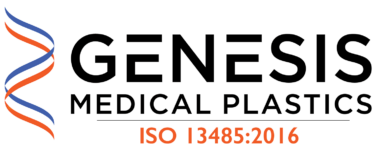PEEK possesses a range of properties that make it ideal for partial dentures. These advantages are compelling to both dentists and their patients, which may be why PEEK is replacing other dental biomaterials, like titanium, chromium and porcelain. PEEK is a popular option for partial dentures and dental implants, for several reasons, including:
- Improved aesthetics – A common concern among patients is that their partial dentures will be obvious and unattractive. The reason why it’s a common concern is because most dental materials are difficult to color match, and are easy to pick out as a result.However, PEEK doesn’t have aesthetic limitations. Instead, the high-performance polymer can be color matched with good precision. PEEK can be colored to fit patients, so no matter what aesthetic issues a patient is dealing with, PEEK offers a solution that will leave them feeling confident. Also, the gingiva, or gums, are less likely to resorb away from a PEEK denture, further enhancing aesthetics by not being seen due to resorption of the gingiva like with most materials
- Improved comfort – After aesthetics, patients place a priority on comfort. Traditional partial dentures may trap heat or alter the patient’s taste. PEEK doesn’t do either, so patients tend to forget that the denture is there. PEEK is also lightweight and can be machined to incredible precision, so it can be used to provide a perfect, individual fit. PEEK weighs far less than metal and the reduction in weight may also help with comfort.
- Excellent wear resistance – Partial dentures are subjected to a great deal of compressive and shear forces, and not many materials can handle it. However, PEEK is resilient enough to withstand daily chewing and grinding. PEEK’s wear resistance has been recognized in a variety of high-stress applications, so it is ideal for use in the oral cavity.
- Total biocompatibility – Partial dentures aren’t rooted in the jawbone like implants, but they do remain in close contact with tissues in the oral cavity, so biocompatibility is still important. Some dental materials, including titanium and nickel, can provoke an allergic reaction, but PEEK hasn’t demonstrated immunogenic behavior. It can be placed in the mouth without fear of irritation, adding to patient comfort.PEEK has been through the toughest biocompatibility testing protocol there is, proven to be neither cytotoxic nor genotoxic. PEEK put up excellent marks during testing, demonstrating to researchers that it could remain in contact with human tissues for prolonged periods without causing damage. Patients can wear their PEEK partial denture without worry.
- Hydrolysis resistance – PEEK is highly resistant to hydrolysis, so it will not lose its integrity in the presence of water, saliva or other bodily fluids. In fact, PEEK doesn’t absorb water to a significant degree, so it will remain stable for years.
- Imaging friendly – In its unfilled state, PEEK does not interfere with medical imaging, including dental X-rays. It can be left in the mouth without fear of it scattering an image and making it difficult or impossible to read the scan.
- Future potential – PEEK is already an important dental biomaterial, but there’s still plenty of research and development to go with the polymer. In the 20 years since PEEK was introduced to medicine, it has been improved upon steadily, and those improvements keep on coming. A promising area of research into PEEK involves the production of antimicrobial PEEK surfaces, which is of immediate use in the microbe-heavy oral cavity.
How PEEK’s Processability Makes for a Better Denture
Among PEEK’s noteworthy traits is its processability, as the polymer can be converted using one of many methods. It can be converted using conventional conversion technologies like injection molding or machining, or it can be converted using more esoteric methods like extrusion or film calendaring. Most PEEK medical components are machined, however, as this allows for the tightest tolerances and advanced component designs. PEEK’s excellent machinability makes this possible, as the polymer’s properties will not suffer during the process.
PEEK’s machinability is particularly helpful in dentistry and in the production of partial dentures. Before a patient receives their partial denture, their mouth is imaged using 3D imagining technology. These images can be used with computer-assisted manufacturing technology to machine a denture that fits the patient perfectly. PEEK’s ability to undergo extensive machining is key to this process.
A Complete Partial Denture
Partial dentures should be discreet, they should be comfortable and they should be reliable. PEEK partial dentures are all of the above, and they can provide this level of performance for years after placement. Put it all together, and PEEK is ready to be the frontline choice for partial dentures
